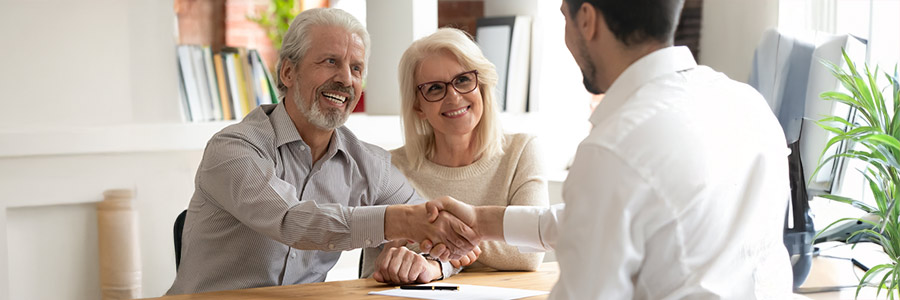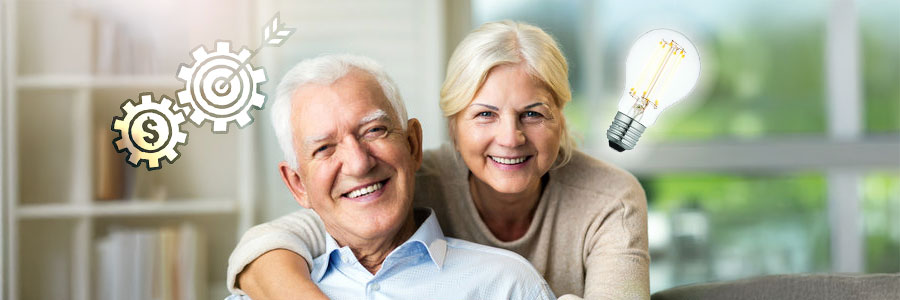In today’s uncertain economic landscape, retirement planning has become more complex than ever. Traditional pensions are fading, market volatility is unsettling, and Americans are living longer—placing increased pressure on retirement savings. According to recent studies, over 40% of Americans fear running out of money in retirement more than they fear death itself.
Enter the Indexed Universal Life Insurance policy (IUL)—a financial product gaining momentum as a supplement to traditional retirement strategies. Many people are now exploring how to use an IUL for retirement as a way to create a more resilient income plan.
This comprehensive guide will walk you through how IULs work, the benefits and risks, and whether they could be a smart addition to your retirement income plan.
Key Takeaways
- IULs offer lifelong coverage and tax-advantaged growth.
- Provide market-linked growth with built-in downside protection.
- Help create tax-free income and support legacy and market protection goals.
- No IRS contribution limits, ideal for people with stable income.
- With expert guidance, an IUL for retirement income can enhance your overall financial strategy.
What Is an Indexed Universal Life (IUL) Insurance Policy?

An Index Universal Life (IUL) policy is a type of permanent life insurance that combines a death benefit with a cash value component. Unlike other life insurance policies, the cash value of an IUL grows based on the performance of a market index like the S&P 500. It offers flexibility, upside potential, and downside protection all in one package.
Key components of an IUL:
- Permanent Coverage: As long as premiums are paid, an IUL policy lasts your entire life.
- Death Benefit: Like all life insurance, IULs provide a tax-free payout to your beneficiaries upon your death.
- Cash Value Account: A portion of your premiums goes into a cash value account that can be accessed through loans or withdrawals.
- Market-Linked Growth: You can typically choose from multiple indexing options, allowing you to link your cash value growth to different market indexes.
- Floor Protection: Your account is protected against market losses through a guaranteed minimum interest rate (typically 0-1%).
- Growth Caps: In exchange for downside protection, there’s usually a cap on how much you can earn when markets perform exceptionally well.
- Premium Flexibility: Unlike many traditional life insurance policies, IULs often allow you to adjust your premium payments within certain limits.
Using an IUL For Retirement

An IUL isn’t just a life insurance policy. It can serve as a powerful tool for your retirement planning strategy. Here’s how you can use an IUL for retirement:
- Tax-Advantaged Growth – Perhaps the most significant retirement advantage of an IUL is the potential to create a tax-free income stream. Through properly structured policy loans, you can access cash value without triggering income taxes, making an IUL for retirement income a potentially more tax-efficient option than traditional qualified accounts. To know how much income you’ll really need, use our retirement expenses checklist to estimate your future costs and plan with greater confidence.
- Protection Against Market Downturns – For pre-retirees and retirees concerned about sequence-of-returns risk (the danger of market downturns early in retirement), IULs offer downside protection. Your retirement income strategy won’t be derailed by a market crash, as your cash value is protected against index losses.
- Estate Planning Advantages – Beyond retirement income, the death benefit can provide a tax-free inheritance to your heirs, effectively serving dual purposes as both retirement and estate planning tools.
- Asset Protection Benefits – In many states, life insurance cash values enjoy some degree of protection from creditors, potentially offering an additional layer of security for your retirement assets (though this varies significantly by state).
- No Contribution Limits – While 401(k)s and IRAs cap annual contributions, IULs have no contribution limits imposed by tax law. This makes them potentially valuable for high-income earners who have already maxed out traditional retirement accounts.
- Liquidity and Accessibility – Unlike some retirement vehicles that lock up your money until a certain age, IUL cash values can generally be accessed at any age without penalties (through loans or withdrawals), providing flexibility for pre-retirement needs.
📣 Learn More About Protecting Your Retirement

Join our free live webinar this Tuesday at 7pm ET to discover how to potentially lower taxes, increase income, and protect against market volatility in retirement.
What you’ll get:
- Expert insights from top certified income planning specialists
- Real-time Q&A session answering your specific questions
- Actionable strategies you can implement right away
IUL Risks and Considerations
While powerful, IULs aren’t suitable for everyone. Here are some caveats you should consider:
- Fees: Higher than term life policies
- Caps on returns: Limit your upside
- Loan risk: Mismanaging loans can lead to policy lapse or tax consequences
- Long-term horizon: Works best when funded consistently for many years
- Surrender Charges: Early withdrawals or cancellations may result in fees
Is an IUL Right for Your Retirement Strategy?

IULs tend to work best for individuals who:
- Have already maxed out traditional retirement accounts
- Are in higher tax brackets and seeking tax-advantaged growth
- Desire protection from market volatility
- Have a long-term perspective (15+ years)
- Need life insurance protection along with retirement planning
- Want flexibility in retirement income planning
Of course, IULs are just one piece of the puzzle. Explore additional ways to prepare for retirement to ensure your entire financial plan is aligned with your long-term goals.
They may be less appropriate for those who:
- Need to maximize every dollar toward retirement (term insurance plus direct investments might be more efficient)
- Have short-term liquidity needs
- Cannot commit to funding the policy for at least 10-15 years
- Are already in low tax brackets where tax advantages provide minimal benefit
How to Get Started: Learn if an IUL is Right for You

The best way to know if an IUL is right for you is to work with a knowledgeable certified financial professional who understands your goals.
Next Steps:
- Fill out this form to request your personalized IFW Retirement Score to see if your income is on track
- On the next page, pick your preferred time and schedule a free consultation to learn how an IUL policy might enhance your retirement strategy.
Implementation Strategies: How to Use an IUL in a Retirement Plan
If you’re considering an IUL as part of your retirement strategy, consider these implementation approaches:
- Start Early – The earlier you start, the more time your cash value has to grow.
- Overfund the Policy – Contribute more than the minimum (within IRS guidelines) to accelerate cash accumulation.
- Use as a Volatility Buffer – Tap into the IUL for income during market downturns, so you don’t sell other investments at a loss.
- Select Appropriate Indexing Strategies – Choose index options that align with your risk tolerance and goals, and review periodically with your advisor.
- Include Riders for Extra Protection – Look into long-term care or chronic illness riders.
- Plan for Tax-Efficient Distributions – Structure retirement withdrawals using policy loans and withdrawals to optimize tax efficiency and preserve long-term policy value.
- Schedule Annual Reviews – Work with your advisor to review performance, make adjustments, and optimize results.
Work with Qualified Professionals

Given their complexity, purchasing an IUL without expert guidance is rarely advisable. Work with a financial advisor who:
- Is experienced with IULs and can illustrate various scenarios
- Understands the tax implications of IULs
- Can compare products across multiple carriers
Common Myths and Misconceptions About IULs

1: IULs are only for the wealthy
- Truth: While IULs are often used by high-income earners, they can benefit anyone with stable income and long-term planning goals.
2: They’re too complicated
- Truth: With the right advisor, you can simplify the process and focus on your goals.
3: You can lose money in an IUL
- Truth: Most IULs include a 0% floor, meaning your cash value won’t decrease due to poor market performance.
4: IULs Are Too Good to Be True
- Truth: IULs can be a valuable tool when used properly, but they require realistic expectations, disciplined funding, and proper management to perform as intended. Keep in mind:
- Long-term average returns are typically in the 5–7% range (after costs)
- Early years may show minimal growth due to policy expenses
- Illustrations are projections, not guarantees
5: IULs Are Just Like Investing in the Market
- Truth: This misconception leads many to compare IUL returns directly with market investments. In reality, IULs are insurance contracts with an indexing feature, not investments. They trade some upside potential for downside protection and provide additional benefits like death protection that investments don’t offer.
Conclusion
Index Universal Life insurance represents a potentially valuable tool in the retirement planning toolkit, but it’s not a one-size-fits-all solution or a replacement for traditional retirement accounts.
When structured correctly, an IUL can serve as both a protective insurance vehicle and a strategic income source—two pillars of a confident retirement plan.
Tuesdays 7:00 pm ET
Webinar: New Rules of Retirement Income Planning
Retirement has changed. Are you prepared? Learn how to build lasting and reliable income.
Reserve My Spot
Frequently Asked Questions (FAQs)
Can I lose money in an IUL?
While the cash value can fluctuate based on index performance, most IULs include a 0% floor, meaning your account won’t lose value due to negative market performance. However, policy fees can reduce your cash value in early years.
How soon can I access the cash value in an IUL?
Cash value generally becomes accessible after the first few years. Accessibility depends on how the policy is funded and how much value has accumulated.
What happens if I stop paying premiums?
If your IUL has sufficient cash value, it may cover the costs and keep the policy in force. Otherwise, the policy could lapse, resulting in loss of coverage and potential tax consequences.




